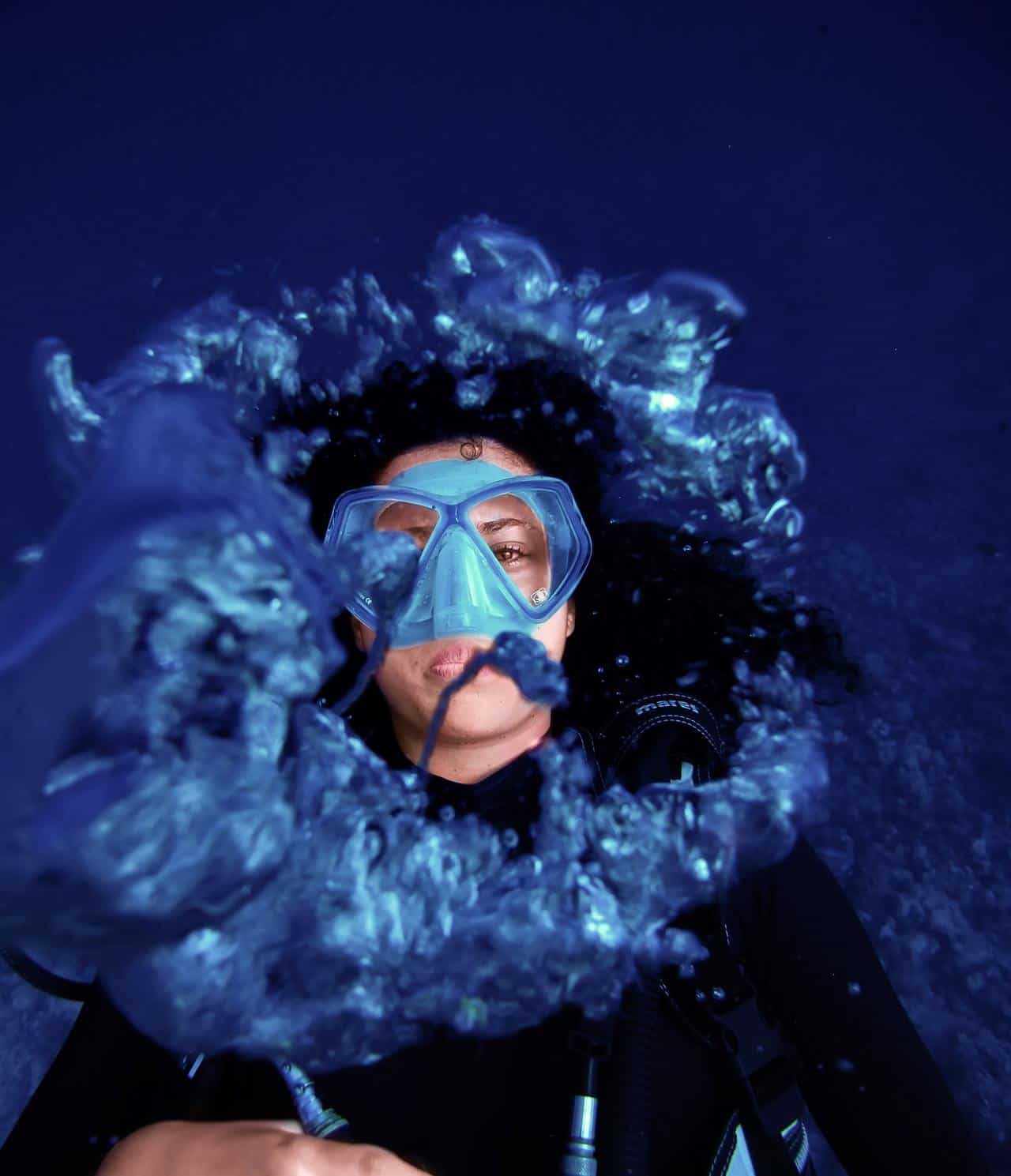You were probably taught as a kid to breathe with your mouth closed.
Maybe your parents had to nag until it became second nature to you.
You might also have been told that breathing through your nose is better for you because it filters out dust and pollution, amongst other benefits.
Then you get interested in scuba diving, look at the mask you have to wear that seals over the nose, and wonder, “how’s that going to work?”
This article will show that, with the standard equipment, you can’t breathe in through your nose while scuba diving.
You’ll see why this is the case and learn how you’ll breathe underwater comfortably with your mouth.
We’ll also look at some special scuba equipment that does allow nose breathing, albeit with extra cost and additional training.
- How Do You Breathe While Scuba Diving?
- Why Can’t You Breathe Through Your Nose When Scuba Diving?
- How Do You Not Breathe Through Your Nose When Scuba Diving?
- Can I Scuba Dive With Swimming Goggles?
- Can I Breathe Out From My Nose?
- Are There Any Nose Breathing Scuba Masks?
- Conclusion
- You Might Also Like…
Disclosure: this post contains affiliate links (clearly marked with ), which means we may earn a commission if you buy something through them, at no additional cost to you.
How Do You Breathe While Scuba Diving?
It feels strange the first time that you breathe underwater.
With the mask in place over your eyes and nose and the regulator blowing bubbles as you exhale, it can take a little getting used to.
While it can be quite tricky to begin with, most divers quickly learn to breathe in a regular and relaxed way as soon as they get used to being underwater.
Breathing underwater should be smooth and relaxed, in and out through the scuba regulator in your mouth.
“Breathe normally and never hold your breath” is the simple advice given to new divers.
It’s essential to breathe in and out quite deeply to get a full gas exchange through the lungs.
Shallow breathing can cause problems underwater, including lightheadedness or even fainting.
How Do You Breathe With a Regulator?
The scuba diving regulator consists of two main parts.
The first stage fits directly to the tank valve outlet and reduces the high pressure in the tank to a lower pressure suitable for the depth you’re at.
It has several hoses coming from it, including one that connects to the regulator’s second stage.
The second stage is the part of the scuba unit that you breathe through.
It gives you air from what is called a “demand valve.”
As you breathe in, a valve inside opens and delivers the air to you.
As you breathe out, the first one closes, and a different valve opens to let the exhaled air out into the water.
The design of the second stage prevents water from coming in as you breathe.
Often, once they have their confidence, new divers find the scuba regulator easier to breathe from compared to a snorkel as the regulator delivers the air to you rather than you having to suck it in yourself.
Under normal circumstances, you keep the regulator in your mouth at all times underwater.
The mouthpiece should be bitten gently and kept in place with your teeth.
Your lips relax around the outside of the mouthpiece to make a seal.
It’s best to keep a relaxed jaw and only gently bite down.
Gently biting prevents damage to the mouthpiece and also jaw aches during or after the dive.
The risk of water leaking into your mouth from around the mouthpiece is also increased if you continually bite down too hard and keep your teeth clenched.
Then just remember to “Breathe normally and never hold your breath.”
Why Can’t You Breathe Through Your Nose When Scuba Diving?
Along with your eyes, your nose is enclosed inside the diving mask.
The mask makes a seal onto your face, so it is impossible to breathe in through it.
There’s a flexible pocket around your nose so that you can still pinch it to equalize your ears as you descend on the dive.
The mask is designed with your nose on the inside for two important reasons:
Mask Clearance
We need the nose inside so that if any water gets in the mask, we can breathe out and push it out.
“Mask clearance” is one of the first skills taught on a scuba diving course as it’s inevitable that at some point, a small amount of water will get inside.
By having their nose inside, the diver can take a deep breath in through their mouth, and then, while holding the top of the mask onto their face, they can exhale smoothly through their nose and push the water out.
Mask Squeeze
Secondly, we need to be able to exhale into the mask as we descend to prevent getting a mask squeeze.
When descending on a dive, the air inside the mask is compressed by the increasing water pressure.
This can cause the mask to uncomfortably push onto a divers face.
Generally, this only causes some discomfort and leaves a mask line on the face, but unchecked, it can be very painful and potentially cause eye damage.
The diver needs to gently exhale through their nose as they feel the mask pressing in on descent to solve this.
Exhaling through the nose adds more air to the mask air space and keeps the pressure equal.
As the diver goes back to the surface, they don’t need to do anything.
The air will expand as the water pressure gets less and bubble out of the mask on its own.
How Do You Not Breathe Through Your Nose When Scuba Diving?
Some people find not being able to breathe through their nose very uncomfortable when they first try scuba diving.
There are various ways you can practice to feel confident breathing with the mask.
- Try wearing the mask on dry land and breathe smoothly in and out to get used to it without having any stress of being in the water.
You can even wear your mask watching TV or reading to get comfortable with mouth breathing only.
- Then try standing in a pool with your hands safely on the edge and with the mask on.
Take a deep breath, put your face in the water, and gently blow some bubbles out of your mouth. Just for one breath out.
Take your face out of the water and breathe easy, keeping the mask still on.
Repeat until you’re comfortable.
- Try again with the mask and now with a snorkel.
Stand comfortably, place your face in the pool, and get used to breathing in and out through your mouth underwater with the snorkel.
- Finally, practice breathing in and out through your mouth with the mask and snorkel and add occasional nose exhalations.
Every third breath out, exhale through your nose, not the mouth, in a slow controlled way to prepare for mask clearing and equalizing.
- Practice, practice, practice.
Practice with the scuba mask in the shower or bath. The more you practice, the more comfortable you’ll become.
As with many things in life, the more relaxed you can stay, the easier it will be to overcome anxieties about not breathing through the nose.
Can I Scuba Dive With Swimming Goggles?
It is absolutely not possible to scuba dive with swimming goggles.
As the nose isn’t inside the goggle air space, it is impossible to equalize them as you descend.
The small amount of air will be compressed very quickly, and the goggles will press uncomfortably onto the eyes.
Attempting to scuba dive with swimming goggles can be extremely dangerous and should never be attempted.
Can I Breathe Out From My Nose?
It is possible to breathe out from the nose when you scuba dive, but in general, it is better not to.
Some people find this more comfortable, but most will find it challenging breathing in through their mouths and then switching to breathing out through their noses all the time.
It is also more likely to have mask problems when breathing out through the nose.
As the exhaled air has to escape out of the mask with each breath, the seal onto the face is continuously broken, increasing the chance that water will leak in.
Additionally, the mask may be more likely to fog-up due to the exhaled air being warm and moist.
In general, if it’s comfortable, it’s best to breathe in and out through the mouth to avoid these problems.
Are There Any Nose Breathing Scuba Masks?
Full-face masks exist for scuba diving that allows divers to breathe in and out through their noses if they want to.
They fully cover the face with the second stage regulator built-in with the mask.
They can even come with underwater communication radios to allow divers to talk to one another or people at the surface.
Mostly full-face masks are used for specific requirements such as commercial underwater diving or by emergency services.
Recreational divers can use them, but they are quite heavy and cumbersome.
They also require additional training to use them safely and are a costly investment.
Full-face masks are not for beginners.
It should be noted that the diver still has to be comfortable using regular masks and regulators in case of full-face mask failure or another emergency underwater.
Conclusion
With it being inside the standard scuba mask, we’ve seen that it’s not possible to breathe through your nose when scuba diving and why.
Although full-face scuba masks are available, the cost and extra training needed to use them safely put them out of the reach of the average diver.
It’s relatively easy to get used to breathing in and out through your mouth and focus on enjoying the underwater world around you with practice.
You Might Also Like…
-

How Do Scuba Divers Drink Water? 5 Possible Ways (+7 Tips)
-

How Long Can Scuba Divers Stay Underwater? (+9 Limiting Factors)
-

Are Scuba Divers Athletes? All the Facts (+New Competitive Forms)
-

Are Sharks Scared of Scuba Divers? (What Every Diver Must Know)
-

Who Should Not Scuba Dive? 17 Reasons (Every Diver Should Know)
-
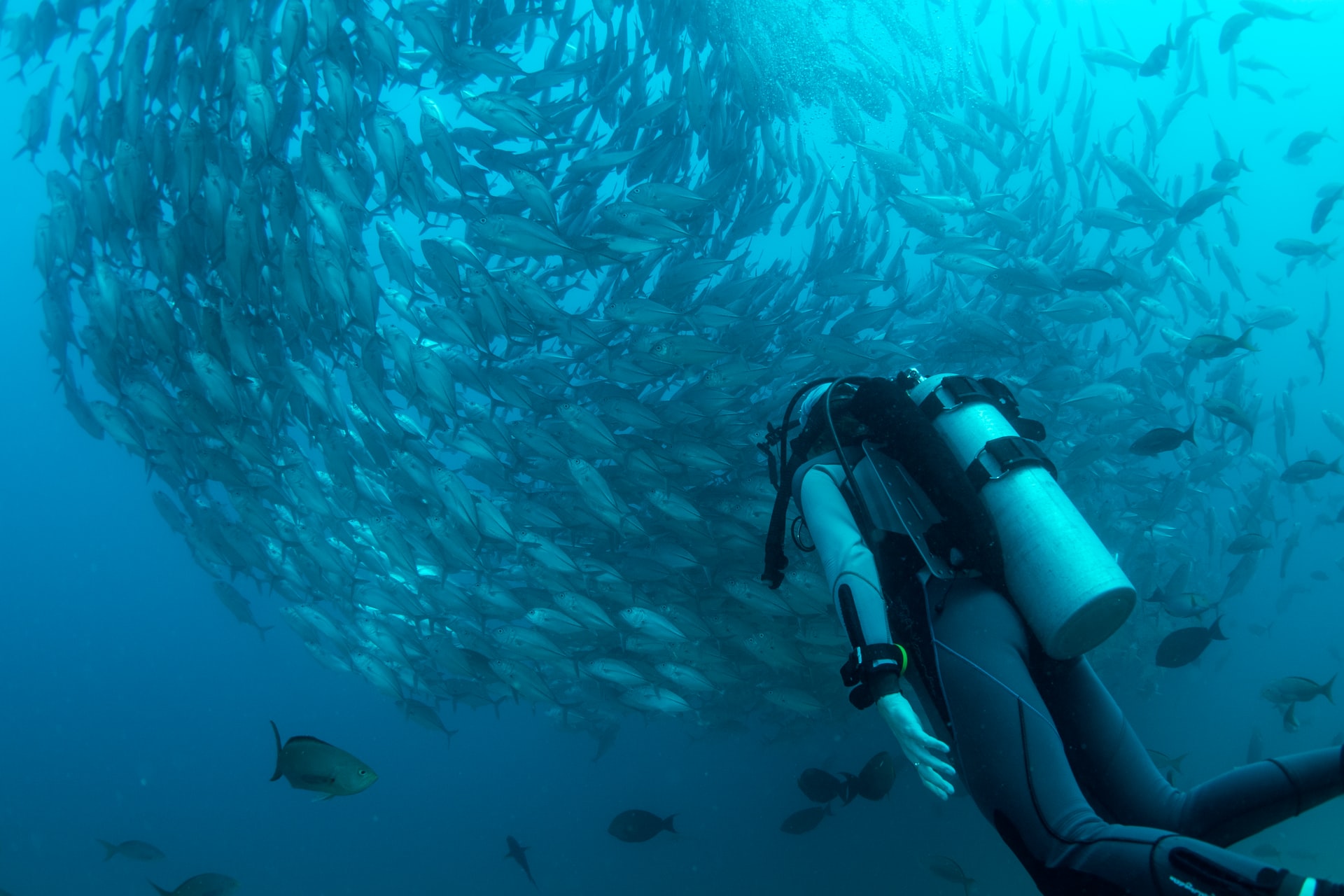
Should I Be Scared of Scuba Diving? 8 Common Fears (Debunked)
-

Why Do Scuba Divers Use More Air at Depth? (+4 Practical Tips)
-
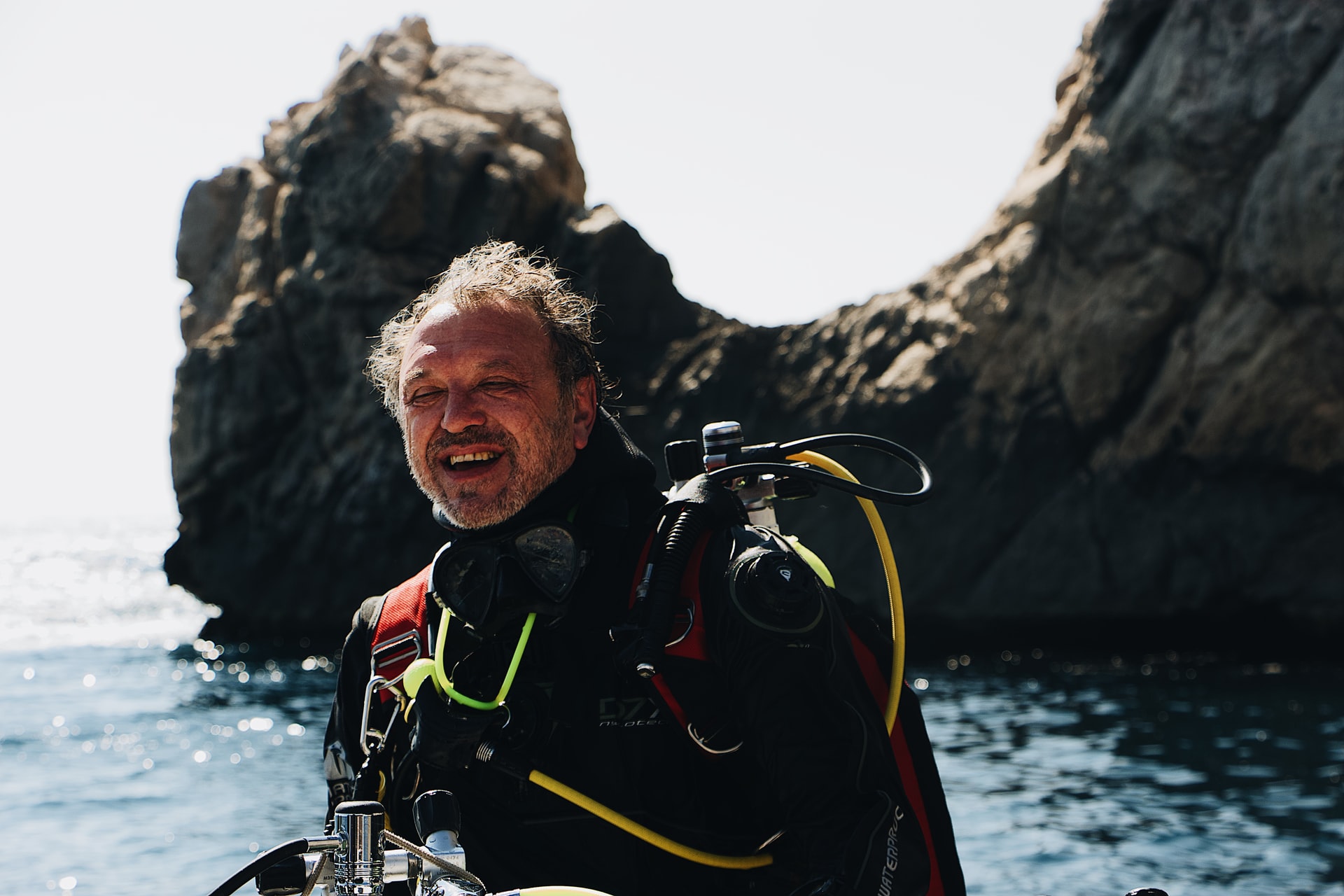
At What Age Should You Stop Scuba Diving? (+9 Tips for Older Divers)
-
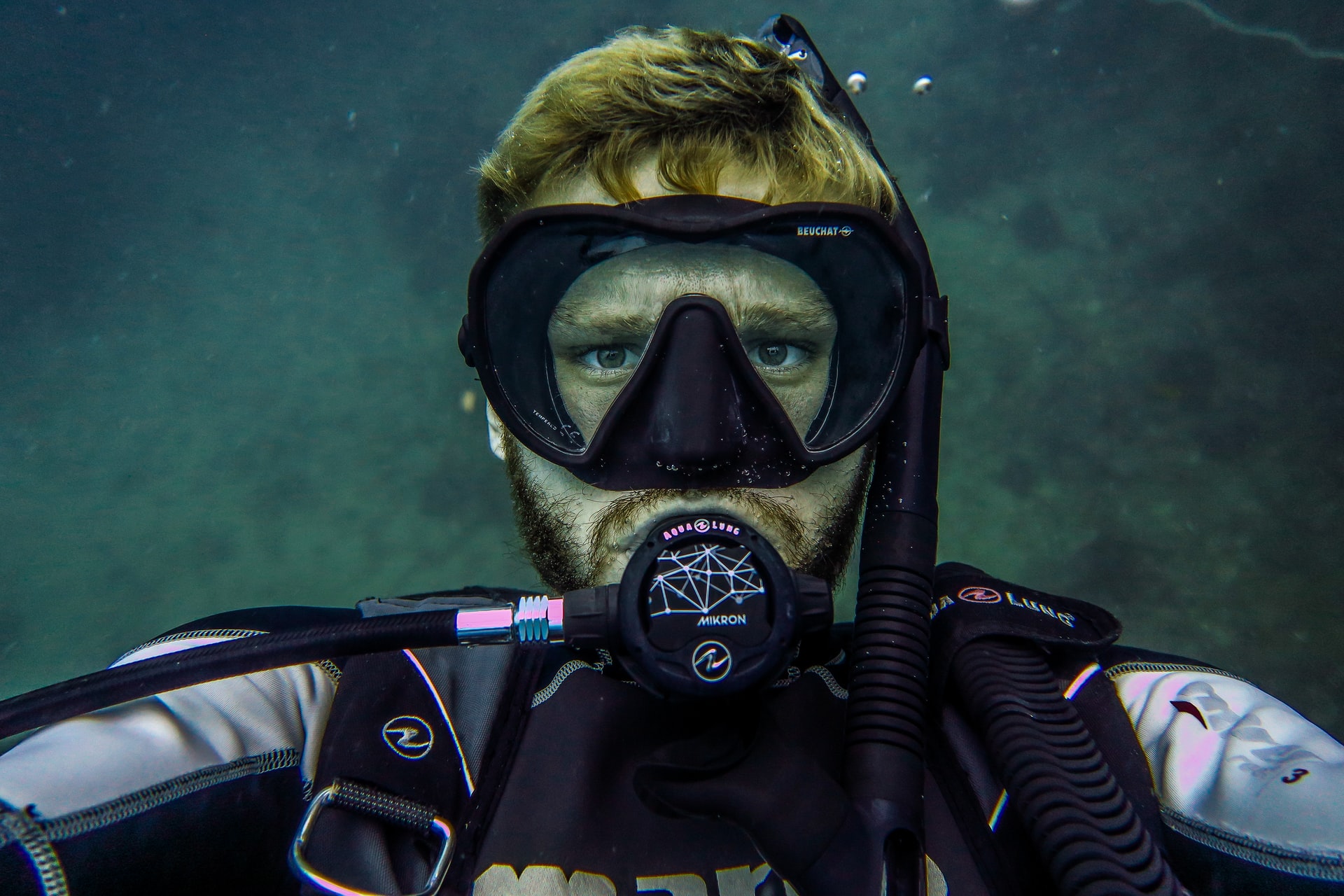
Should I Shave Before Scuba Diving? Crucial Facts (+9 Helpful Tips)
-

Why Do Scuba Divers Use Helium? (+Its Pros & Cons)
-
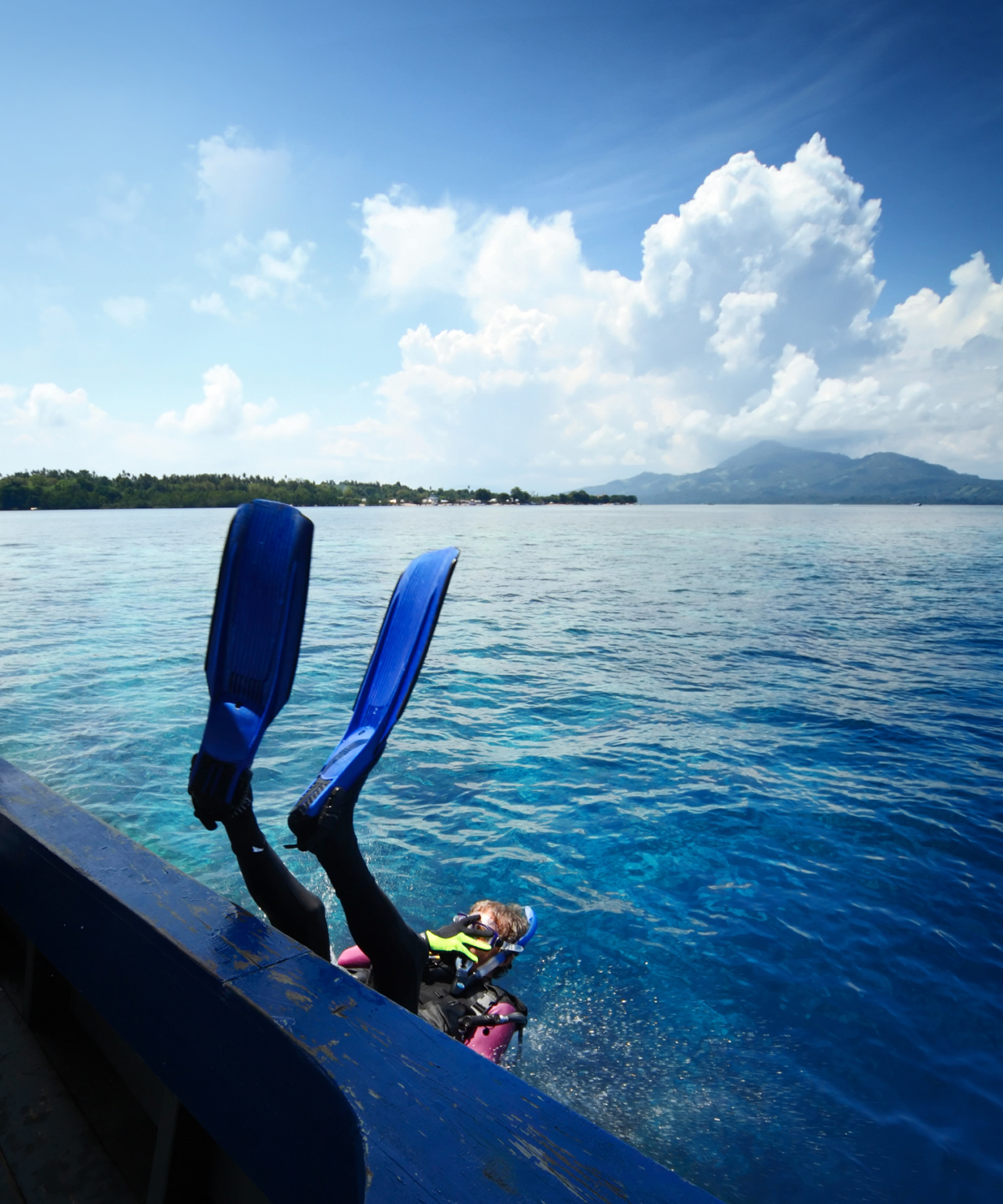
Why Do Scuba Divers Go in Backwards? (+3 Alternative Entries)
-

How Do Scuba Divers Sink and Float? (+Tips to Get It Right)

